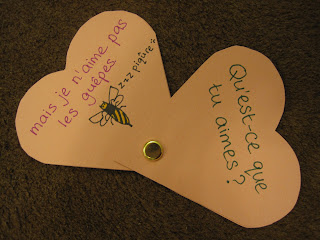To make this one I used a sheet of A4 paper cut in half lengthways (to make a strip about 30cm by 10.5cm). I folded it into a concertina of 8 equal sections. It's important that your concertina has an even number of sections so that your present will lie flat.
Next I cut a rectangle of red card (other colours are available of course) 13cm by 10.5 cm and decorated it with Christmassy patterns and a metallic-tape bow. Then I cut the parcel in half and stuck on half on each end of the concertina.
I haven't put any writing on the concertina yet, but I have some ideas:
- Use dictionaries to find the Spanish words for presents and write these on the concertina.
- As above, plus the children add some adjectives.
- Children write things that they are going to do for their parents as a Christmas present (lots of good ideas here)
- Write a Christmas recipe.
- Write and illustrate Christmas vocabulary.
- Write a Christmas poem.
Many thanks to everyone who has been tweeting me pictures of the mini-books that they have been making at school. It's lovely to see all the different ways that they can be used.
.jpg)

















.jpg)










